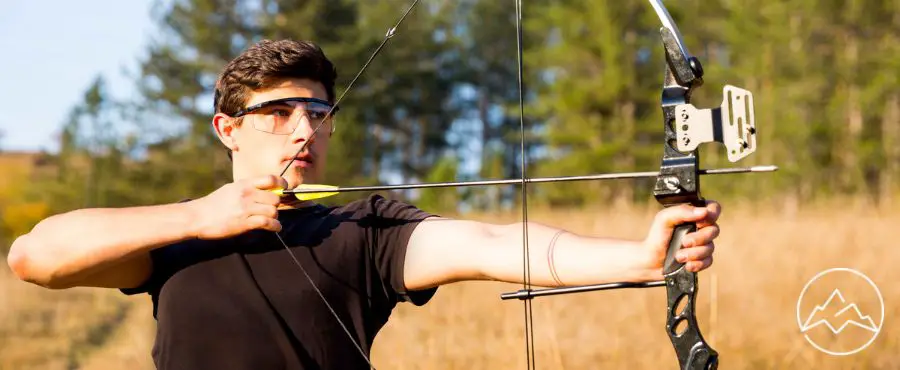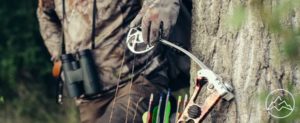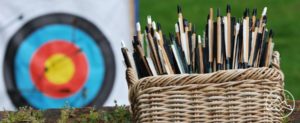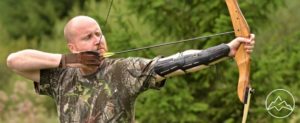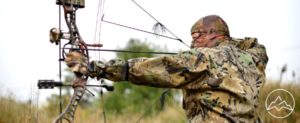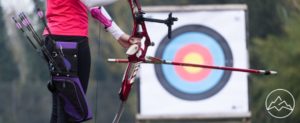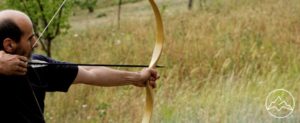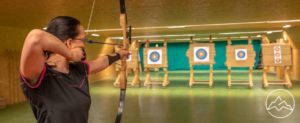According to a recent study, nearly 75% of archers experience poor arrow flight at some point in their practice. This issue, which significantly affects the accuracy and consistency of shots, can stem from various causes, including gear malfunctions and flaws in shooting form. The gear-related factors encompass issues such as bad fletching, broken nocks, and incorrect arrow spine selection, while shooting form includes elements like an improper release or anchoring technique. Additionally, cam timing discrepancies in compound bows and low-quality arrows can also contribute to the problem. To address this, archers need to carefully evaluate their equipment, examine their shooting form, and make necessary adjustments to elements such as arrow rest, sight alignment, and anchor point. Furthermore, performing paper tuning can be an effective method to fine-tune arrow flight. However, if these measures prove insufficient, seeking guidance from an expert may be crucial. In this article, we will delve into the causes of poor arrow flight, focusing on gear and equipment as well as ways to improve shooting form.
Key Takeaways
- Poor arrow flight in archery is commonly caused by gear malfunctions and flaws in shooting form.
- Gear-related factors include bad fletching, broken nocks, incorrect arrow spine selection, cam timing discrepancies, and low-quality arrows.
- Shooting form elements that can contribute to poor arrow flight include improper release and anchoring techniques.
- Evaluating equipment, examining shooting form, and making necessary adjustments to elements such as arrow rest, sight alignment, and anchor point can greatly improve arrow flight.
Causes of Bad Flight
The causes of bad arrow flight, including issues with archery gear, shooting form, fletching, broken nocks, flight interference, shooting the wrong arrow spine, damaged arrows, cam timing for compound bows, user error, poor quality arrows, and various steps to address these issues, have been previously discussed. Arrow tuning is an essential aspect of archery that aims to optimize arrow flight and accuracy. Troubleshooting techniques are employed to identify and rectify any problems that may arise during the tuning process. Evaluating gear, checking form, verifying arrow spine and length, adjusting arrow rest and sight alignment, reviewing anchor point and release, and performing paper tuning are some of the steps involved in this process. Seeking guidance from an expert is also recommended if problems persist. Fixing bad arrow flight may require time and patience, as it involves a thorough analysis and adjustment of various factors that can affect arrow flight.
Gear and Equipment
Gear and equipment play a crucial role in determining the trajectory and accuracy of an arrow in archery. Proper gear selection is vital to ensure optimal performance. Choosing the right bow, arrows, and accessories based on an individual’s skill level, shooting style, and physical attributes is essential. It is important to consider factors such as draw weight, arrow spine, and bow design to achieve the desired arrow flight. Regular equipment maintenance is also of utmost importance. Keeping the bow in good working condition, ensuring proper alignment of sights and arrow rests, and regularly inspecting arrows for any signs of damage or wear are essential for consistent and accurate arrow flight. Regular maintenance and attention to gear details contribute to improved shooting performance and overall archery success.
Improving Shooting Form
To truly excel in the sport of archery, one must approach the art of shooting with a level of precision akin to that of a surgeon performing a delicate operation. Improving shooting form is crucial in achieving accurate and consistent arrow flight. Here are four key aspects to focus on when working on shooting form:
- Improving release technique: A clean and smooth release is essential for accurate arrow flight. It involves properly gripping the bowstring and releasing it without any unnecessary movement or tension.
- Correcting anchor point: The anchor point is where the archer’s hand and string come to rest during full draw. A consistent and correct anchor point ensures consistent arrow placement. It is important to find a comfortable and repeatable anchor point that allows for a consistent shot execution.
- Body alignment: Proper alignment of the body, including the feet, hips, shoulders, and head, plays a crucial role in achieving a stable and repeatable shooting form. It helps in maintaining balance and minimizing unwanted movement during the shot.
- Follow-through: A good follow-through involves maintaining proper form and focus after releasing the arrow. It helps in maintaining consistency and allows for proper evaluation of the shot.
By focusing on these aspects and continually refining shooting form, archers can greatly improve their arrow flight and overall performance.
Frequently Asked Questions
Can bad arrow flight be caused by external factors such as wind or weather conditions?
Yes, bad arrow flight can be influenced by external factors such as wind and weather conditions. Wind can cause the arrow to deviate from its intended trajectory, leading to poor accuracy. Strong winds can create turbulence and unpredictable air currents, making it difficult for the arrow to maintain a stable flight. Similarly, adverse weather conditions like rain or snow can affect the arrow’s flight by altering its aerodynamics and adding extra weight. Therefore, it is important for archers to consider and adjust for these external factors to achieve consistent and accurate arrow flight.
What are some common signs of a broken nock and how can it affect arrow flight?
Signs of a broken nock can include visible cracks, chips, or complete detachment from the arrow shaft. These issues can have a significant impact on arrow flight. A broken nock can cause instability and imbalance, leading to erratic arrow flight and reduced accuracy. It is crucial to ensure proper arrow spine selection to match the bow’s draw weight and the archer’s draw length. Additionally, proper fletching alignment is essential as it helps stabilize the arrow during flight, minimizing any negative effects caused by a broken nock.
Are there any specific tips or techniques for adjusting arrow rest and sight alignment to improve arrow flight?
To improve accuracy in archery, it is important to consider the proper spine and weight of the arrow. When adjusting the arrow rest and sight alignment, there are a few tips and techniques that can be employed. Firstly, ensure that the arrow rest is positioned correctly to provide proper support for the arrow. Additionally, sight alignment should be adjusted to ensure that the arrow is aligned with the target. These adjustments can greatly enhance arrow flight and overall accuracy.
How does cam timing affect arrow flight for compound bows?
Cam timing plays a crucial role in the flight of arrows for compound bows. Improper cam timing can result in inconsistent and erratic arrow flight. When the cams on a compound bow are not synchronized properly, it can cause the arrow to be released unevenly, leading to a loss of accuracy and reduced distance. On the other hand, proper cam timing ensures a smooth and consistent release, resulting in improved arrow flight. Therefore, it is essential to regularly check and adjust the cam timing to optimize arrow performance. Additionally, arrow spine, which refers to the stiffness of the arrow shaft, can significantly affect arrow flight. Using an incorrect arrow spine can lead to erratic flight, as the arrow may not flex properly upon release. Therefore, selecting the appropriate arrow spine based on the bow’s draw weight and the archer’s draw length is crucial for achieving optimal arrow flight.
Is it possible for user error to be the sole cause of bad arrow flight, or are other factors usually involved as well?
The primary factor in poor arrow flight is a combination of both gear and form, rather than being solely attributed to user error. While user error, such as improper release or form, can certainly contribute to bad arrow flight, it is important to consider the role of gear as well. Factors such as bad fletching, broken nock, shooting the wrong arrow spine, damaged arrows, and poor quality arrows can all significantly affect arrow flight. Additionally, muscle tension plays a crucial role in affecting arrow flight accuracy, further emphasizing the importance of both gear and form in achieving optimal arrow flight.
Conclusion
Causes of poor arrow flight in archery can be attributed to various factors including gear issues and shooting form. Problems such as bad fletching, broken nocks, and flight interference can affect arrow flight. Additionally, shooting the wrong arrow spine or using damaged arrows can lead to poor performance. Cam timing, user error, and low-quality arrows can also contribute to bad arrow flight. To rectify this, it is crucial to assess gear, evaluate shooting form, confirm arrow spine and length, make adjustments to the arrow rest and sight alignment, review the anchor point and release, and perform paper tuning. Seeking expert guidance may be necessary if problems persist. Fixing bad arrow flight requires patience and attention to detail. In conclusion, addressing these factors can significantly improve arrow flight for archers.

